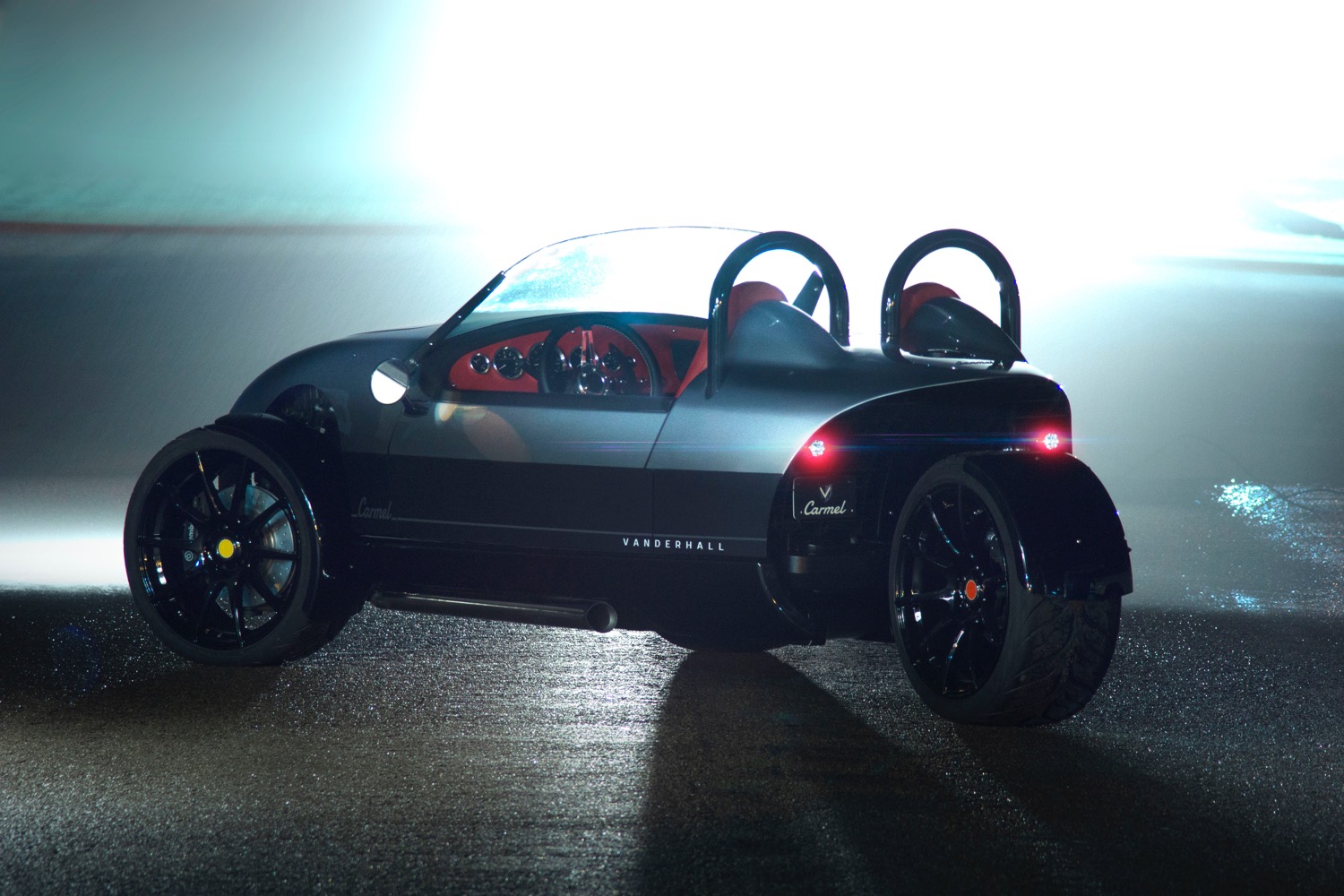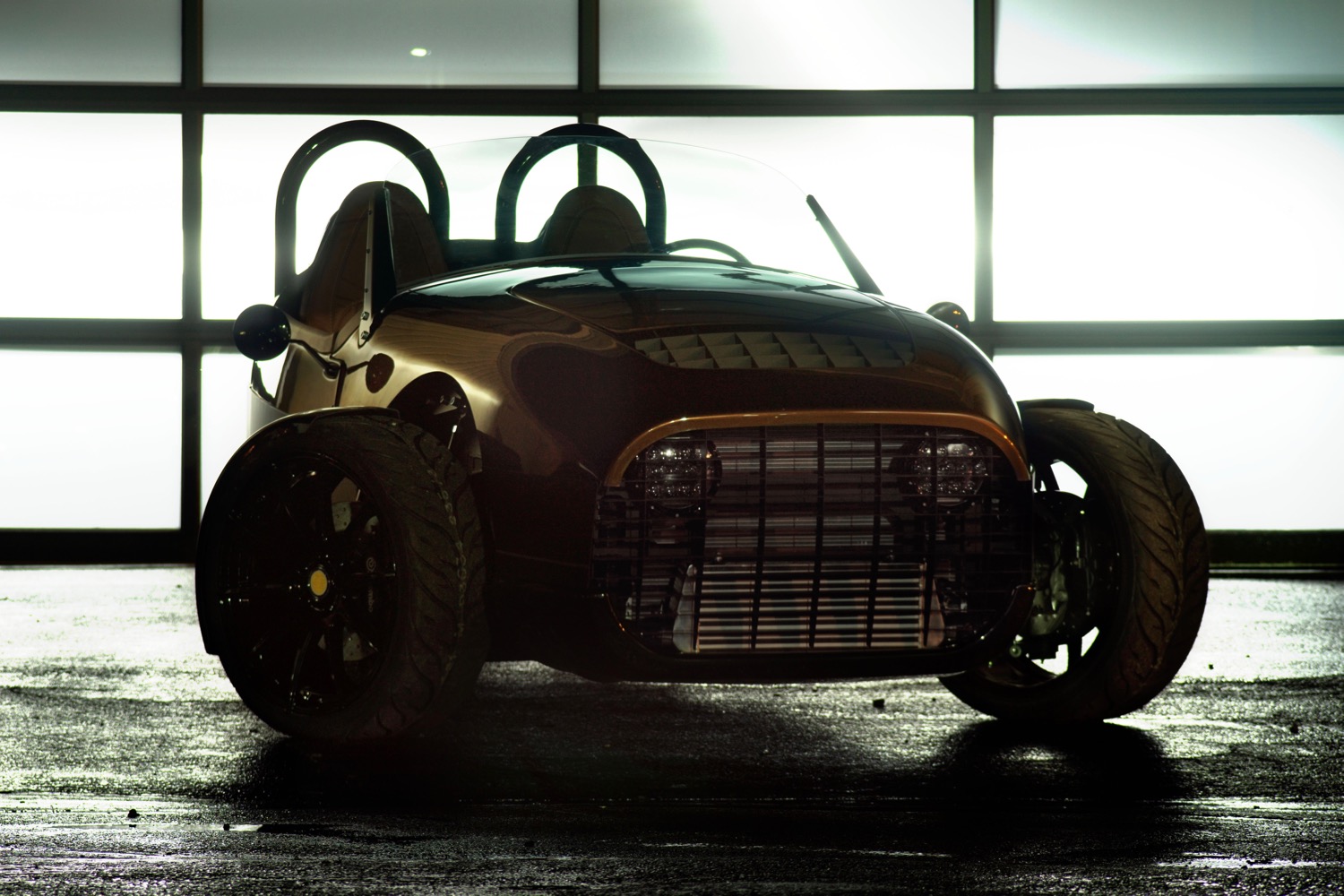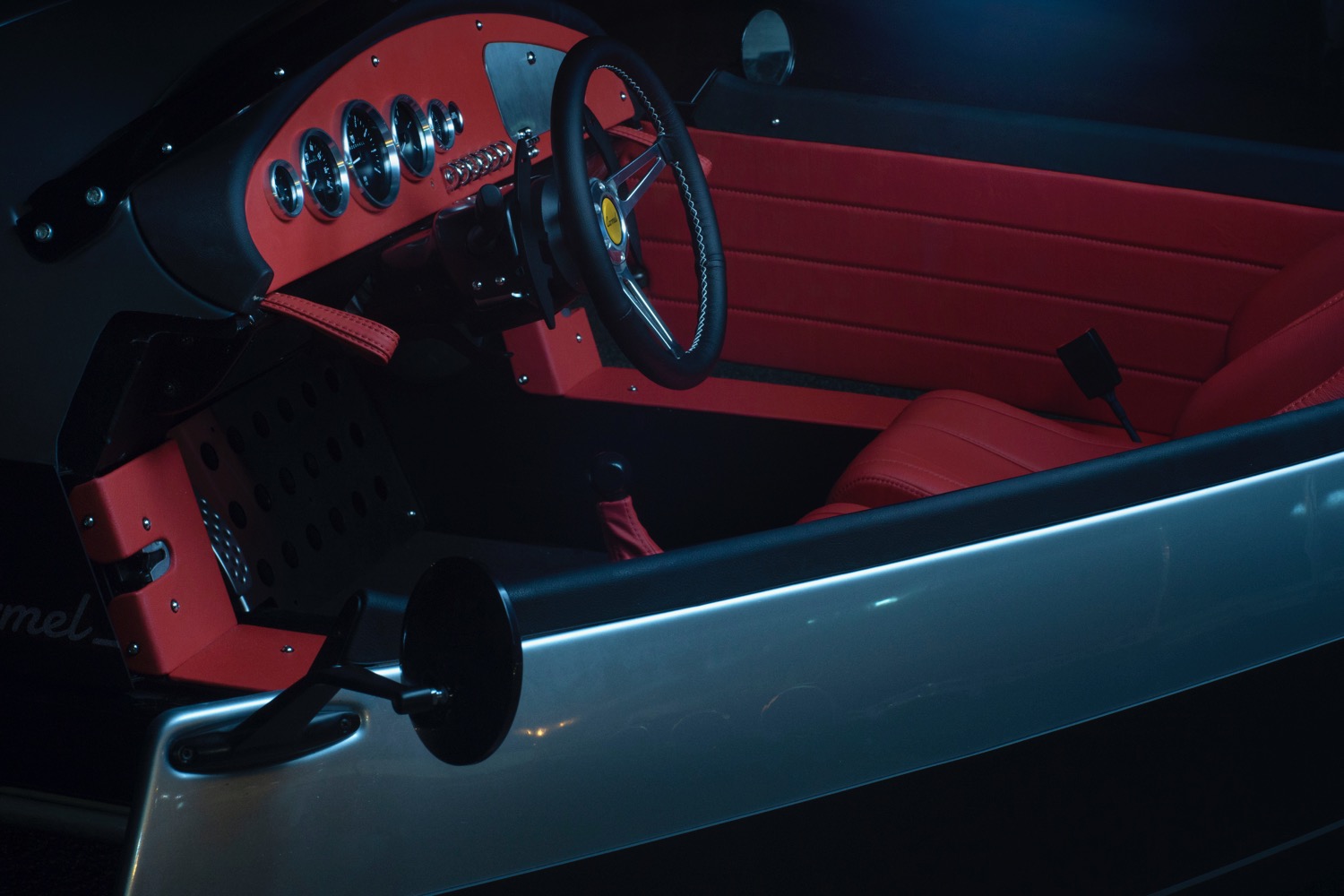If you’re looking for the last word in luxury, a three-wheeler probably isn’t for you. Originally conceived to exploit British laws that placed lower taxes on vehicles with three wheels than four, these oddities don’t offer much in the way of comfort or refinement. But Vanderhall Motor Works claims its new Carmel is as upscale as the California town it’s named after.
The Carmel shares the same basic design as Vanderhall’s other models, but with a few enhancements to improve performance and usability. Unlike those other models, the Carmel has real doors, as well as an optional roof and provisions for air conditioning to give the driver and a passenger a more comfortable ride. It also rides on 19-inch wheels, rather than the 18-inch wheels of other Vanderhall three-wheelers. The Carmel uses the aluminum chassis from the Vanderhall Venice, with composite bodywork.
Unlike the rival Morgan 3 Wheeler, Vanderhall models use car engines rather than motorcycle engines. Previous models used a General Motors-sourced 1.4-liter turbocharged inline-four, rated at 180 horsepower and 185 pound-feet of torque. The Carmel features a 1.5-liter turbo inline-four, producing 200 hp and 203 lb-ft, with a six-speed automatic transmission. Also sourced from GM, the new engine has an aluminum block in place of the old engine’s iron block, decreasing weight, according to Vanderhall. The company claims the 1,595-pound Carmel will do zero to 60 mph in 4.5 seconds, and reach a top speed of 138 mph.
Based in Provo, Utah, Vanderhall has four distinct three-wheeler models besides the Carmel. Its highest-volume model is the composite-bodied Venice. Vanderhall also offers a carbon-fiber-bodied version called the Laguna, and the all-electric Edison. Vanderhall also plans to add a single-seat Speedster model to the lineup later this year.
The Vanderhall Carmel goes on sale in 2019, starting at $39,950. As with all three-wheelers, regulations vary by state. The current Vanderhall Venice is considered a motorcycle in some states, meaning the driver must have a motorcycle license and abide by applicable helmet laws. But other states classify three-wheeled vehicles differently, meaning a regular driver’s license will do and no helmet is required. So if you’re thinking about buying a Carmel, check your local laws.








